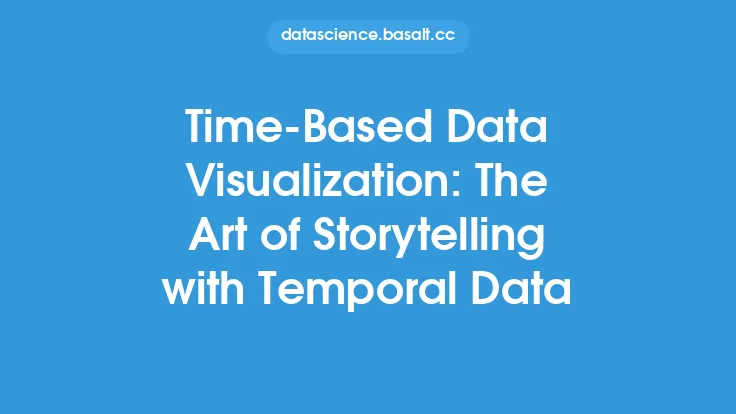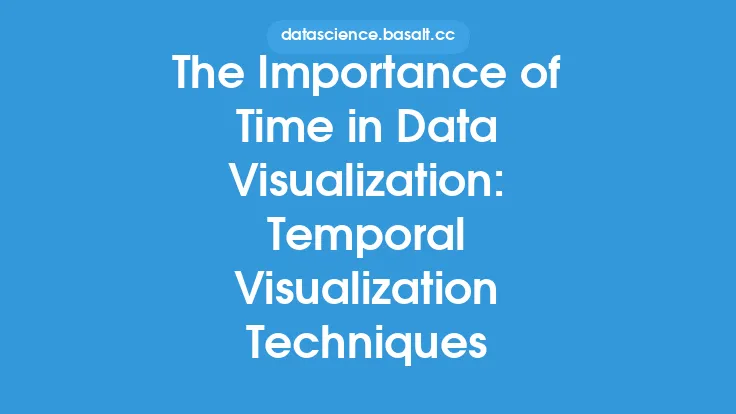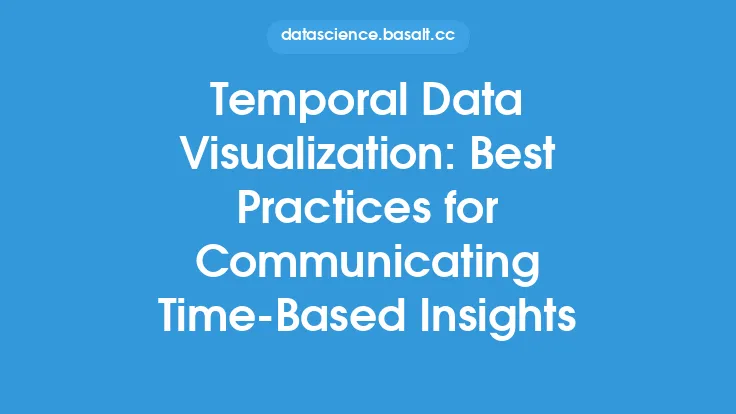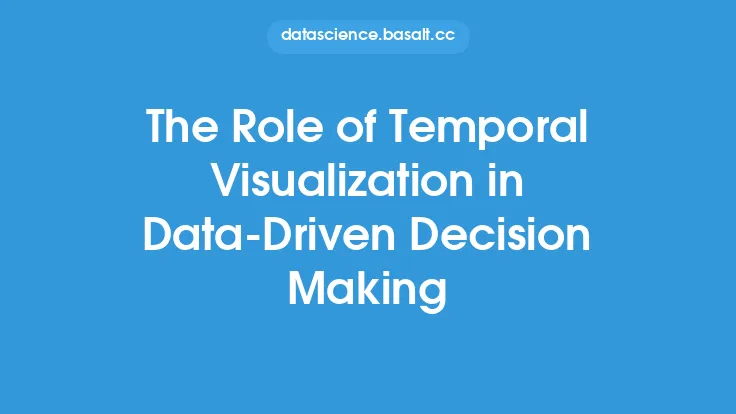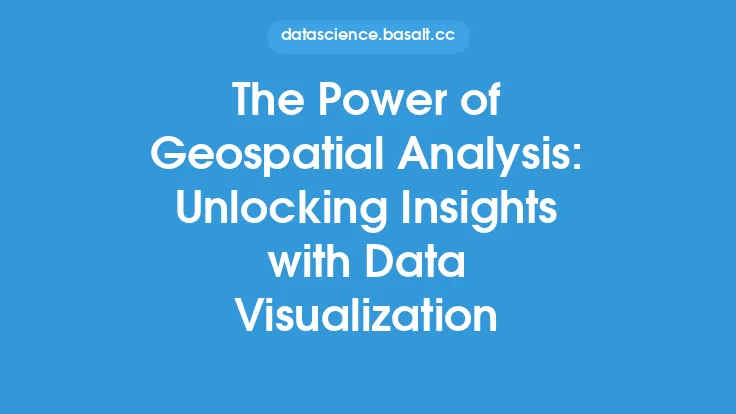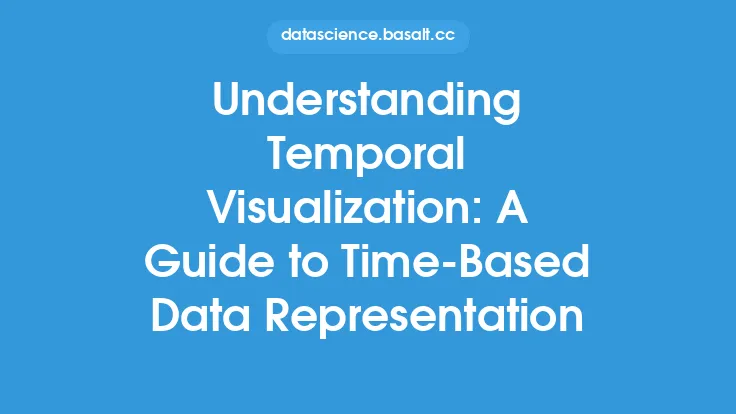Temporal visualization is a crucial aspect of data analysis, as it enables users to understand and explore time-series data in a more intuitive and meaningful way. Time-series data, which is data collected over time, is ubiquitous in many fields, including finance, healthcare, climate science, and more. By visualizing this data, users can identify patterns, trends, and correlations that might be difficult to discern from raw data alone. In this article, we will delve into the power of temporal visualization, exploring its benefits, techniques, and applications, as well as the tools and technologies used to create effective temporal visualizations.
Introduction to Temporal Visualization Techniques
Temporal visualization techniques are designed to effectively display time-series data, allowing users to extract insights and meaning from the data. These techniques can be broadly categorized into two main types: 2D and 3D visualizations. 2D visualizations, such as line charts, scatter plots, and bar charts, are commonly used to display time-series data, as they are easy to create and interpret. 3D visualizations, on the other hand, can be used to display more complex data, such as multivariate time-series data, but can be more challenging to interpret. Some common temporal visualization techniques include:
- Time-series plots: These plots display data over time, allowing users to identify trends and patterns.
- Heat maps: These maps use color to represent data values, allowing users to quickly identify patterns and correlations.
- Stream graphs: These graphs display data as a series of streams, allowing users to visualize the flow of data over time.
- Calendar-based visualizations: These visualizations display data in a calendar format, allowing users to identify seasonal patterns and trends.
Benefits of Temporal Visualization
Temporal visualization offers numerous benefits, including:
- Improved understanding of time-series data: Temporal visualization enables users to quickly and easily understand complex time-series data, identifying patterns, trends, and correlations that might be difficult to discern from raw data alone.
- Enhanced decision-making: By providing a clear and intuitive understanding of time-series data, temporal visualization enables users to make more informed decisions, based on data-driven insights.
- Increased efficiency: Temporal visualization can help users to quickly identify areas of interest, such as anomalies or trends, allowing them to focus their analysis and exploration efforts more efficiently.
- Better communication: Temporal visualization can be used to communicate complex time-series data to non-technical stakeholders, enabling them to understand and engage with the data more effectively.
Applications of Temporal Visualization
Temporal visualization has a wide range of applications, across many fields, including:
- Finance: Temporal visualization is used in finance to analyze stock prices, trading volumes, and other financial metrics, enabling users to identify trends and patterns, and make more informed investment decisions.
- Healthcare: Temporal visualization is used in healthcare to analyze patient data, such as vital signs, medical histories, and treatment outcomes, enabling healthcare professionals to identify patterns and trends, and provide more effective care.
- Climate science: Temporal visualization is used in climate science to analyze climate data, such as temperature, precipitation, and sea level rise, enabling researchers to identify patterns and trends, and understand the impacts of climate change.
- Social media: Temporal visualization is used in social media to analyze user behavior, such as engagement, sentiment, and demographics, enabling marketers and researchers to understand and engage with their audiences more effectively.
Tools and Technologies for Temporal Visualization
There are many tools and technologies available for creating temporal visualizations, including:
- Data visualization libraries: Such as D3.js, Matplotlib, and Seaborn, which provide a wide range of visualization tools and techniques for creating temporal visualizations.
- Data visualization platforms: Such as Tableau, Power BI, and QlikView, which provide interactive and dynamic visualization capabilities, enabling users to explore and analyze time-series data in real-time.
- Programming languages: Such as Python, R, and Julia, which provide a wide range of libraries and tools for creating temporal visualizations, including data manipulation, analysis, and visualization.
- Big data technologies: Such as Hadoop, Spark, and NoSQL databases, which provide scalable and efficient data storage and processing capabilities, enabling users to analyze and visualize large-scale time-series data.
Best Practices for Temporal Visualization
To create effective temporal visualizations, it is essential to follow best practices, including:
- Keeping it simple: Avoid clutter and complexity, using simple and intuitive visualization techniques to communicate time-series data.
- Using color effectively: Use color to represent data values, but avoid using too many colors, which can be confusing and overwhelming.
- Providing context: Provide context for the data, including axes labels, titles, and legends, to enable users to understand the data and its significance.
- Interactivity: Use interactive visualization tools to enable users to explore and analyze the data in real-time, identifying patterns and trends, and drilling down into the data for more detailed insights.
Challenges and Limitations of Temporal Visualization
While temporal visualization offers many benefits, there are also challenges and limitations to consider, including:
- Data quality: Temporal visualization is only as good as the data it is based on, so it is essential to ensure that the data is accurate, complete, and consistent.
- Scalability: Temporal visualization can be challenging when dealing with large-scale time-series data, requiring scalable and efficient data storage and processing capabilities.
- Complexity: Temporal visualization can be complex, particularly when dealing with multivariate time-series data, requiring advanced visualization techniques and tools.
- Interpretation: Temporal visualization requires interpretation and analysis, which can be subjective and dependent on the user's expertise and experience.
Future Directions for Temporal Visualization
The field of temporal visualization is constantly evolving, with new techniques, tools, and technologies emerging all the time. Some future directions for temporal visualization include:
- Increased use of machine learning and artificial intelligence: To automate the analysis and visualization of time-series data, enabling users to identify patterns and trends more quickly and easily.
- Greater emphasis on storytelling: To use temporal visualization to tell stories and communicate insights, rather than simply presenting data.
- More interactive and dynamic visualizations: To enable users to explore and analyze time-series data in real-time, identifying patterns and trends, and drilling down into the data for more detailed insights.
- Greater use of virtual and augmented reality: To create immersive and interactive temporal visualizations, enabling users to engage with time-series data in new and innovative ways.
